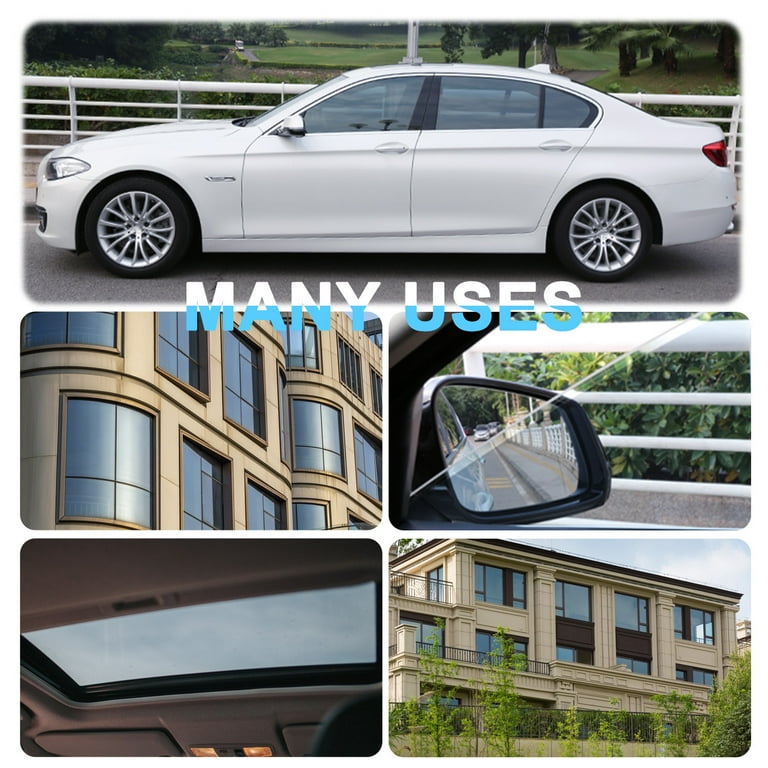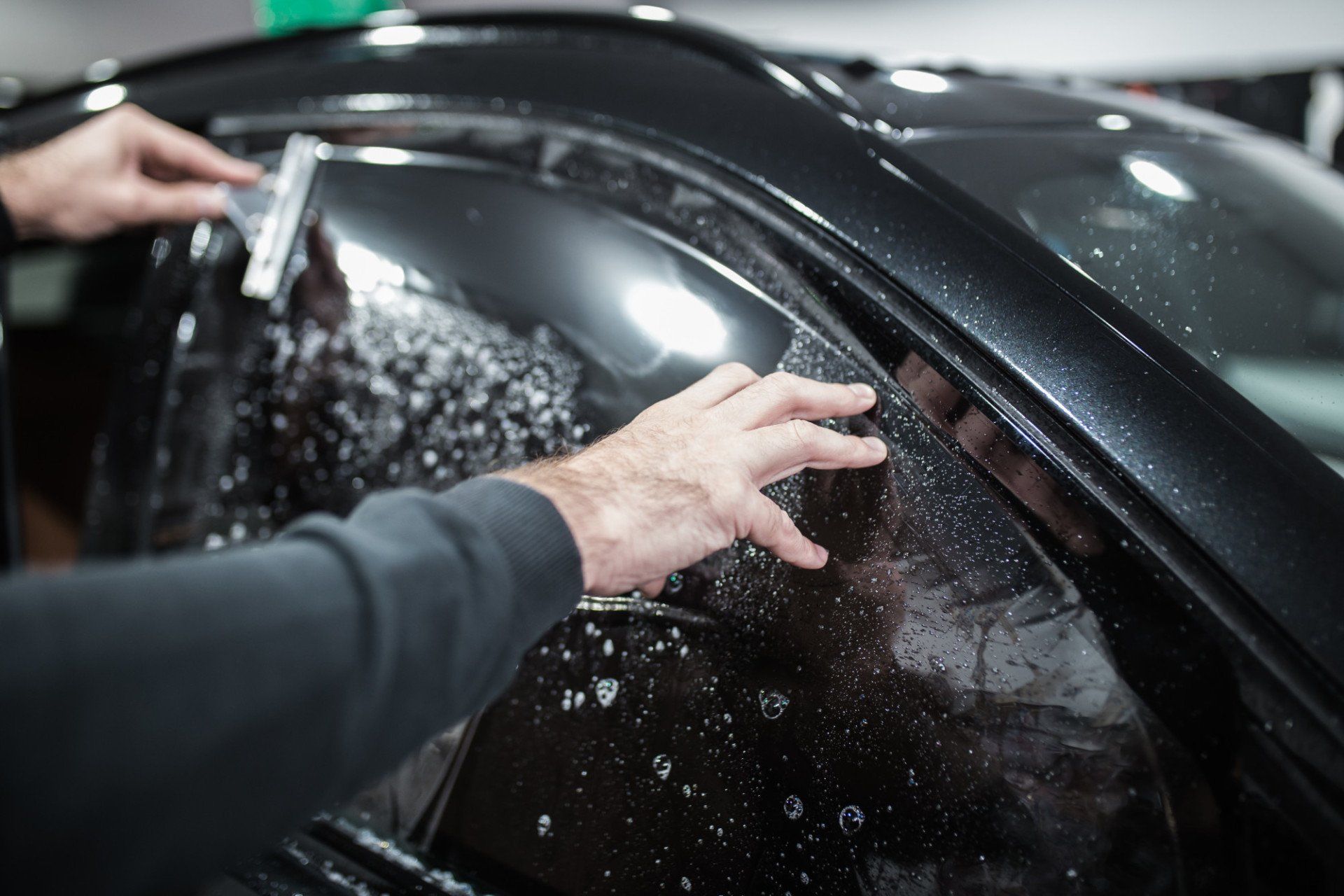Whatever You Need to Understand About Car Window Tinting for Your Car
Car home window tinting is a sensible improvement for numerous vehicle proprietors. It supplies benefits such as boosted convenience and energy effectiveness. Numerous tint movies satisfy different demands and preferences. Understanding lawful policies and selecting the right tint percent is important. The installment process and appropriate upkeep likewise play significant roles in making certain the long life of the tint. What other aspects should one consider before choosing on window tinting?
Benefits of Automobile Home Window Tinting
Although some lorry owners might overlook it, auto window tinting offers many advantages that enhance both the driving experience and the lorry's longevity. One of the main benefits is the decrease of warm build-up inside the lorry, permitting an extra comfortable trip, specifically throughout warm weather condition. This can cause reduced reliance on cooling, improving gas efficiency.Additionally, home window tinting provides security versus unsafe UV rays, which can create skin damages and fade interior materials with time. By obstructing these rays, the tint aids protect the automobile's interior and maintain its resale value.Moreover, tinted home windows can improve privacy and safety and security, as they make it extra hard for outsiders to see inside the automobile. This added layer of protection can prevent prospective theft. On the whole, automobile window tinting acts as a sensible financial investment that contributes to both comfort and the vehicle's general well-being.
Sorts Of Window Tint Films
When thinking about car window tinting, automobile owners run into a range of window color movies, each created to satisfy specific demands and preferences. The initial classification is dyed window movie, which offers a basic degree of privacy and UV security while being affordable. Next off, metalized movies incorporate tiny metal bits, reflecting warm and enhancing resilience, although they might interfere with electronic signals.Ceramic movies are an additional option, understood for their premium heat denial and clearness, supplying high performance without signal disturbance. Finally, hybrid movies integrate qualities of colored and metalized movies, striking a balance between price and functionality. Each kind of home window tint film presents special advantages, allowing lorry owners to choose based on their details requirements, such as warm control, budget plan, and appearance factors to consider. Recognizing these alternatives is important for making a notified choice relating to auto home window tinting.
Comprehending Legal Laws
When thinking about auto window tinting, it is important to comprehend the legal guidelines that regulate tint darkness limitations and windshield tint demands. These laws can differ substantially from one state to another, influencing what is permitted for car owners. Familiarizing oneself with these laws guarantees conformity and aids prevent prospective fines or charges.
Color Darkness Limits
How can lorry proprietors guarantee they stay certified with neighborhood regulations regarding window tinting? Recognizing color darkness restrictions is important. Each state has certain guidelines that dictate the permitted degrees of darkness for window tints, which are gauged by Visible Light Transmission (VLT) portions. Usually, front-side windows have to allow a greater percentage of light contrasted to rear home windows. Some states may permit only 30% VLT for front windows, while the back windows could be permitted to have especially darker tints. To assure conformity, car owners must speak with state standards or local regulation enforcement for accurate info. Furthermore, accredited tinting specialists can supply understandings about legal limitations, making sure that automobile proprietors make informed decisions.
Windscreen Tint Rules

State-Specific Regulations
Guiding through the landscape of state-specific laws relating to vehicle window tinting needs cautious focus to detail, as guidelines can vary greatly from one state to another. Each state has its own set of guidelines controling allowed color percents, kinds of products, and positioning on automobile home windows. Some states allow darker colors on back home windows while prohibiting them on front home windows, while others have stricter overall limitations (automotive window tinting clinton township). Furthermore, certain states mandate using details materials or call for accreditation from installers. Failing to adhere to these laws can cause fines or the requirement to eliminate non-compliant tint. Automobile proprietors ought to consult their state's Department of Electric motor Cars or appropriate authority to guarantee adherence to neighborhood laws.
Picking the Right Color Percent
When selecting the appropriate color percentage for a vehicle's home windows, one should consider numerous aspects that affect both appearances and performance. Tint percents normally range from 5% to 70%, with reduced portions giving darker shades and greater portions permitting a lot more light in. A darker tint can improve privacy and minimize glare, while a lighter color can keep presence and abide by lawful restrictions.Furthermore, personal choice plays a considerable role in this decision. Some individuals might prefer the smooth look of darker tints, while others could favor a much more open, ventilated feel. In addition, the car's objective should be taken into consideration; for example, those using their lorries for commercial functions may decide for lighter tints to preserve a specialist look.Ultimately, the right tint percent equilibriums personal style, comfort, and adherence to regional laws, guaranteeing a satisfying tinting experience.
The Setup Refine
An effective installment of home window color requires careful attention to detail and the right tools. The process commonly starts with thorough cleansing of the windows to eliminate dust, dust, and particles, assuring correct adhesion of the film. Once the surfaces are prepared, the installer measures and reduces the color film to fit each window accurately.Next, the movie is placed on the glass, often using a solution to facilitate easy change and protect against air bubbles. Warmth is occasionally put on the film to adapt it to the home window's contours, enhancing its look and longevity. After verifying a seamless fit, the installer thoroughly trims any excess film along the edges.Finally, the installer checks for blemishes and confirms all edges are safe. This thorough strategy is vital not only for looks however also for accomplishing the desired efficiency benefits of home window tinting, such as UV defense and warmth reduction.
Maintenance and Treatment for Tinted Windows
Appropriate upkeep and care are necessary for protecting the integrity of colored windows. Efficient cleansing methods, the evasion of damaging chemicals, and regular examinations for damages play important roles in making sure longevity. By complying with these standards, car proprietors can maintain the visual and functional advantages of their window color.
Cleansing Techniques for Color
Maintaining the quality and long life of tinted windows needs details cleaning techniques customized to the movie's fragile surface. It is crucial to utilize a soft microfiber cloth to prevent scraping the color while cleansing. A gentle service of water and a couple of drops of moderate meal soap can effectively remove dirt and gunk. It is suggested to use the cleaning service to the fabric, as opposed to straight onto the colored surface, to prevent dampness from seeping right into the edges of the film. Gentle, circular motions should be employed to clean up the windows completely. Routine cleansing helps preserve exposure and stops build-up, ensuring that the tint stays in prime problem with time. Adhering to these methods will expand the life of colored home windows.
Avoiding Damaging Chemicals
Although several home cleaning items work on various surfaces, they can posture considerable threats to colored home windows. Chemicals such as ammonia, bleach, and particular solvents can deteriorate the color film, resulting in discoloration and peeling. Individuals need to select pH-balanced cleaners particularly developed for tinted windows. In addition, making use of soft microfiber fabrics will certainly aid avoid scratches and keep the tint's stability. Regular upkeep is vital; subsequently, preventing extreme scrubbing up or abrasive materials is vital. It is advisable to check out product tags thoroughly to validate compatibility with window tints. By choosing the appropriate cleaning options and tools, automobile owners can maintain the look and performance of their colored windows, assuring a longer life-span and peak efficiency.
Examining for Damages
Regular examinations of colored windows are vital for identifying any kind of indications of damages that may endanger their efficiency and appearance. Owners need to search for gurgling, peeling, or staining, as these issues can suggest inadequate installation or exposure to unsafe elements. It is suggested to check the edges of the movie where peeling off might check and start for any kind of scratches that could affect visibility. Additionally, ultraviolet (UV) rays can trigger the color to break down with time, so checking its performance in blocking UV light is vital. If any kind of damages is detected, prompt action ought to be taken, which might include expert fixing or substitute. Maintaining tinted windows not only improves visual appeals however additionally warranties proceeded security for both guests and the vehicle interior.
Typical Myths About Window Tinting
What misunderstandings border More Help window tinting for vehicles? Several individuals think that all window colors are prohibited, but guidelines vary by state, enabling for particular degrees of tinting. An additional usual myth is that darker tints block even more warmth; nonetheless, the efficiency of window films depends upon their innovation instead of darkness. Some individuals additionally assume that home window tinting is exclusively for visual appeals, neglecting its advantages, such as UV security and glare decrease. Furthermore, lots of assume that home window tinting will certainly damage their vehicle's glass, yet skillfully used tints can in fact improve glass sturdiness. There is a belief that home window tints block exposure, yet high-quality movies are designed to preserve clear sightlines while providing privacy. Understanding these misconceptions helps consumers make informed decisions concerning home window tinting, ensuring they take pleasure in the full series of advantages it provides.
Regularly Asked Questions
Just How Long Does Window Tinting Typically Last?
The long life of window tinting varies based upon factors such as setup top quality, film type, and ecological problems. Usually, high-quality tint can last anywhere from 5 to 10 years before requiring substitute or reapplication.
Can I Remove Home Window Color Myself?
Removing window tint oneself is feasible, though it might be tough. Individuals ought to use a warm resource and glue eliminator to ease the process, however care is suggested to avoid damaging the car's glass or inside.
What Tools Are Needed for DIY Window Tinting?

Will Home Window Tinting Damages My Vehicle's Glass?
Window tinting, when used appropriately, generally does not damage a cars and truck's glass. Incorrect installation or low-quality movies may lead to peeling, gurgling, or scratching, potentially endangering the integrity of the glass over time.
Can Tinted Windows Impact My Automobile's Resale Worth?
The effect of colored home windows on an automobile's resale worth can differ. While some purchasers appreciate the included privacy and UV protection, others may view it as a potential issue, possibly influencing resale positively or adversely. When considering car home window tinting, vehicle proprietors run into a selection of window color movies, each designed to fulfill details demands and choices. When thinking about car window tinting, it is crucial to recognize the lawful guidelines that control color darkness limitations and windshield color demands. Usually, front-side windows have to enable a higher percent of light contrasted to rear home windows. Some states might i was reading this permit just 30% VLT for front home windows, while the back home windows may be permitted to have significantly darker tints. Some states permit darker tints on rear home windows while banning them on front home windows, while article others have more stringent general limitations.